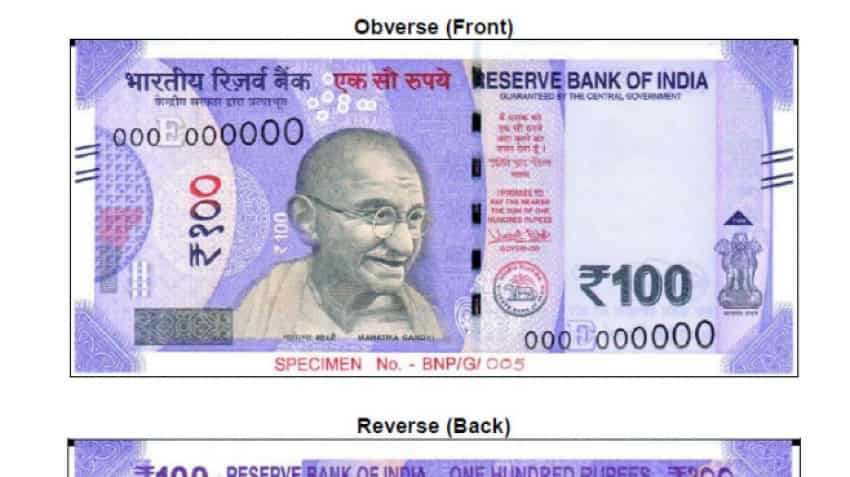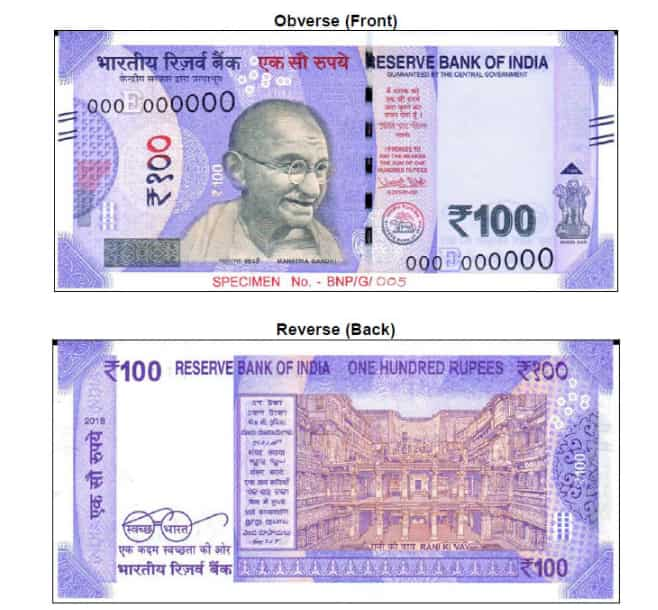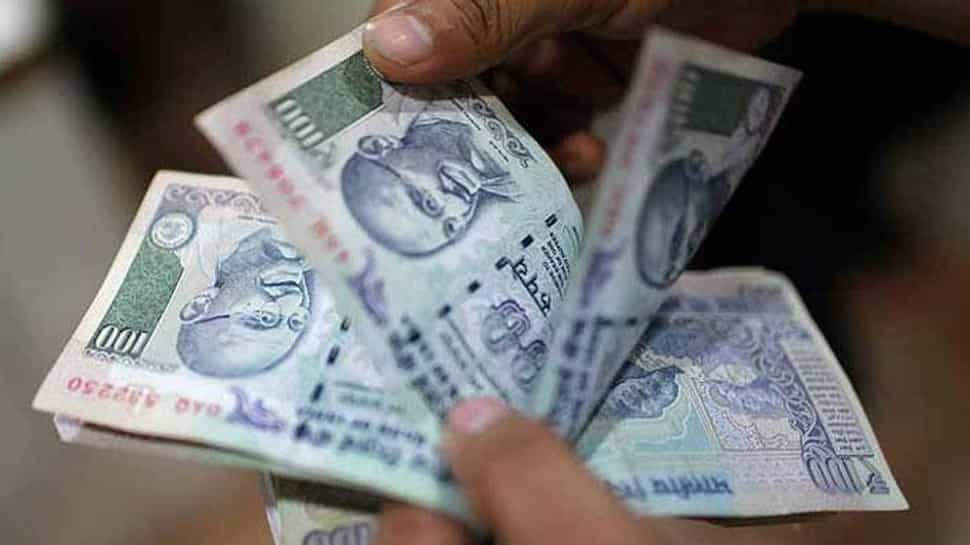New Rs 100 note vs old Rs 100 banknote: Check out the difference
The introcudtion of the new Rs 100 note would be the fifth unveiling of a currency note since the Prime Minister Narendra Modi carried out the demonetisation drive in November, 2016, eliminating high denomination notes like Rs 500 and Rs 1000.

After giving a makeover to old Rs 50 and Rs 10 notes, the Reserve Bank of India has now decided to also bring in new Rs 100 note in small denomination of currency chest. In a recent notification, the central bank stated that, all the banknotes in the denomination of Rs 100 issued by the Reserve Bank in the earlier series will continue to be legal tender. It explained further, as is normal, when a new design of banknote is introduced, printing and supply of these notes for distribution to public through the banking channel will gradually increase.
The introcudtion of the new Rs 100 note would be the fifth unveiling of a currency note since the Prime Minister Narendra Modi carried out the demonetisation drive in November, 2016, eliminating high denomination notes like Rs 500 and Rs 1000.
Since then, RBI has introduced new Rs 10, Rs 50 and Rs 500. There were two new currencies added in India namely Rs 200 and Rs 2,000.
Let’s have an understanding on how the new Rs 100 banknote is different the from the existing one.
New Rs 100 note!
The new Rs 100 note will come in in the Mahatma Gandhi (New) Series, bearing signature of Dr. Urjit R. Patel, Governor, Reserve Bank of India. The The new denomination has Motif of “RANI KI VAV” on the reverse, depicting the country’s cultural heritage. The base colour of the note is Lavender. The note has other designs, geometric patterns aligning with the overall colour scheme, both at the obverse and reverse. Dimension of the banknote will be 66 mm × 142 mm.
Obverse (Front)
- See through register with denominational numeral 100
- Latent image with denominational numeral 100
- Denominational numeral १०० in Devnagari
- Portrait of Mahatma Gandhi at the centre
- Micro letters ‘RBI’, ‘भारत’, ‘India’ and ‘100’
- Windowed security thread with inscriptions ‘भारत’ and RBI with colour shift; Colour of the thread changes from green to blue when the note is tilted
- Guarantee Clause, Governor’s signature with Promise Clause and RBI emblem towards right of Mahatma Gandhi portrait
- Ashoka Pillar emblem on the right
- Mahatma Gandhi portrait and electrotype (100) watermarks
- Number panel with numerals in ascending font on the top left side and bottom right side
For visually impaired intaglio or raised printing of Mahatma Gandhi portrait, Ashoka Pillar emblem, raised triangular identification mark with micro-text 100, four angular bleed lines both on the right and left sides.

Reverse (Back)
- Year of printing of the note on the left
- Swachh Bharat logo with slogan
- Language panel
- Motif of RANI KI VAV
- Denominational numeral १०० in Devnagari
Old Rs 100 banknote!
The floral design printed both on the front (hollow) and back in the middle of the vertical band next to the watermark has the denomination numeral ‘100’. Half of the numeral is printed on the observe and half on the reverse. Both the printed portions have back to back registration so that the numeral appears as one when viewed against light.
Also, it will fluoresce in yellow on the reverse and the text will fluoresce on the observe under ultraviolet light.
Front
The vertical band contains latent image showing the numeral 100 when the banknote is held horizontally at eye level.
The letter ‘RBI’ and the numeral 100 can be viewed with the help of a magnifying glass in the zone between the Mahatma Gandhi portrait and the vertical band.
A triangle with improved intaglio print that helps the visually impaired to identify the denomination.
The portrait of Mahatma Gandhi, the multi-directional lines and an electrolyte mark showing the denominational numeral 100 appear.
Further, portrait of Mahatma Gandhi, the RBI seal, guarantee and promise clause, Ashoka Pillar emblem, RBI governor’s signature on the banknote and the identification mark for the visually impaired are printed.
2mm wide security thread with inscriptions ‘भारत’ and RBI and exclusive colour shift from green to blue when viewed from different angles.

Reverse
Year of printing appears on the reverse of the banknote.
Number of the banknote are printed in fluorescent ink. The banknote ink has optical fibers, and both can be seen when the banknote is viewed under ultraviolet light.
It is printed on a special watermarked paper with substrate cotton and cotton rag. This gives the banknote a unique feel and crackling sound.
The new series banknote has paper with increased grammage and calliper thickness.
It is clear that, new Rs 100 note will be different in color, pattern, design and will bear current governor Urjit Patel mark.
In India currently there are nine paper notes namely old Rs 10, new Rs 10, Rs 20, old Rs 50, new Rs 50, Rs 100, Rs 200, Rs 500 and Rs 2000. The ATMs only dispense from Rs 100 to highest denomination Rs 2000.
Get Latest Business News, Stock Market Updates and Videos; Check your tax outgo through Income Tax Calculator and save money through our Personal Finance coverage. Check Business Breaking News Live on Zee Business Twitter and Facebook. Subscribe on YouTube.
10:57 AM IST











 Is your Rs 100 note fake or genuine? Here is how you can check
Is your Rs 100 note fake or genuine? Here is how you can check Have old Rs 10, Rs 50, Rs 100 notes? Why you should worry
Have old Rs 10, Rs 50, Rs 100 notes? Why you should worry New Rs 20 note coming now? Demonetisation sowed seeds of new Rs 10, Rs 50, Rs 100 notes
New Rs 20 note coming now? Demonetisation sowed seeds of new Rs 10, Rs 50, Rs 100 notes Should RBI think about bringing new Rs 100 note?; ATM operators complain
Should RBI think about bringing new Rs 100 note?; ATM operators complain  New Rs 100 currency note set to birth this big problem
New Rs 100 currency note set to birth this big problem